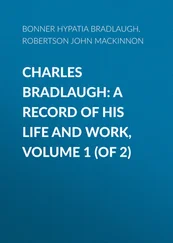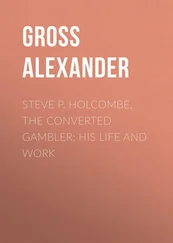Brad Stevens - Monte Hellman - His Life and Films
Здесь есть возможность читать онлайн «Brad Stevens - Monte Hellman - His Life and Films» весь текст электронной книги совершенно бесплатно (целиком полную версию без сокращений). В некоторых случаях можно слушать аудио, скачать через торрент в формате fb2 и присутствует краткое содержание. Год выпуска: 0101, Издательство: McFarland & Company, Жанр: Старинная литература, на английском языке. Описание произведения, (предисловие) а так же отзывы посетителей доступны на портале библиотеки ЛибКат.
- Название:Monte Hellman: His Life and Films
- Автор:
- Издательство:McFarland & Company
- Жанр:
- Год:0101
- ISBN:нет данных
- Рейтинг книги:4 / 5. Голосов: 1
-
Избранное:Добавить в избранное
- Отзывы:
-
Ваша оценка:
- 80
- 1
- 2
- 3
- 4
- 5
Monte Hellman: His Life and Films: краткое содержание, описание и аннотация
Предлагаем к чтению аннотацию, описание, краткое содержание или предисловие (зависит от того, что написал сам автор книги «Monte Hellman: His Life and Films»). Если вы не нашли необходимую информацию о книге — напишите в комментариях, мы постараемся отыскать её.
Monte Hellman: His Life and Films — читать онлайн бесплатно полную книгу (весь текст) целиком
Ниже представлен текст книги, разбитый по страницам. Система сохранения места последней прочитанной страницы, позволяет с удобством читать онлайн бесплатно книгу «Monte Hellman: His Life and Films», без необходимости каждый раз заново искать на чём Вы остановились. Поставьте закладку, и сможете в любой момент перейти на страницу, на которой закончили чтение.
Интервал:
Закладка:

In 1961, Hellman returned to Columbia, "working for the first time as an assistant editor. I believe one picture was Birdman of Alcatraz , and another The Notori ous Landlady. The job was not like my work on Medic , where I worked closely with the editor. Columbia was more like a factory (we called it 'the prison,' which it looked like) where all the assistants from different productions worked more or less together. It was not unusual to see parts of dailies from different productions, nor to see bits of scenes on moviolas in different cutting rooms during the course of a day. I had much more of a rapport with the other assistants than with my own editor." 9
In 1962, Roger Corman attempted to sell his Filmgroup catalogue to Allied Artists Television, and was told that five of these B-features—most of which ran little more than an hour — were too short for commercial time slots. Corman responded by asking Jack Hill and Monte Hellman to shoot additional footage featuring those actors who were still available. While Hill stretched Corman's The Wasp Woman (1958) from 66 to 77 minutes, Hellman expanded Beast from Haunted Cave and three Corman-directed titles: Ski Troop Attack , Last Woman on Earth (1960) and Creature from the Haunted Sea (1960).
In a 1974 interview, Hellman told Christian Braad Thomsen that, "I've always been attracted to the myth of Sisyphus, and I think there's a little bit of Sisyphus in all my films, the idea of an action that is repeated over and over again. The man who climbs the mountain to push the stone to the top, and the stone rolls down and he has to start all over, again and again. I see a lot of things in terms of circles and circling back. It just seems that's what so much of human endeavor is." 10Something along these lines must have occurred to Hellman when, towards the end of 1962, he found himself embroidering four films that had already been finished and released, his own directorial debut of three years earlier among them. Yet Hellman recalls the experience as one of total freedom. In contrast to Beast from Haunted Cave —where he had shot someone else's script and been prevented from editing the resulting footage — Hellman here assumed total control as director, writer, producer and editor. As he later recalled, "In a way, those weeks were among the most creative of my life. It was joyous work, without a trace of egotism. That experience was terrific because I really had my own unit and I was able to produce, write, and direct some stuff that I thought was very creative. That was probably the most fun I've ever had. I had absolute control over the crew and how the money was spent and everything. It was really fantastic, plus the fact that it was totally off the wall stuff—it was like Saturday Night Live. " 11
With Winter approaching, it made sense to start by tackling the two films set in snowy landscapes. Thus it was that in December 1962, Beast from Haunted Cave and Ski Troop Attack were once again shot back-to-back, this time with California's Mammoth Lake substituting for the original locations. Unable to secure the services of Frank Wolff ("Frank Wolff and Mike Forest went to Italy to be in Atlas for Roger. Frank never came back. Mike came back briefly, so he was available for the added scenes, but he too spent many years working in Italy" 12) or Sheila Carol, Hellman was obliged to focus on the characters played by Michael Forest, Richard Sinatra and Wally Campo. By comparing the television version (currently available on DVD from Synapse Films with a running time of 71m 56s) with the theatrical print released by Sinister Cinema, we can see that the following three sequences (which have a combined length of 6m 30s) were added in 1962.
After a card reading "Allied Artists Television Corporation Presents A Film Group [sic] Picture," there is a new pre-credits sequence lasting 1m 37s. The film now begins with Marty taking photos of the building he plans to rob, then driving to the ski lodge with Byron. After telling Byron to "Get your skis and meet me at the lift," Marty photographs the skiing vacationers, and the image freezes before cutting to the 1959 film's opening credits.
Three minutes forty seconds into Sinister's tape, the shot of Gypsy and Alex on a ski lift dissolves to the exterior of their hotel. The television version eliminates this dissolve and adds a new 3m 30s sequence. As the ski lesson Gil is giving Marty and Byron comes to an end, the three men stop outside Gil's ski shop. Marty encounters Gil's sister Jill (Jaclyn Hellman), a character not seen (or even referred to) in the original. They strike up a conversation, and Marty asks Jill to have dinner with him, but Gil tells her she will have to work that evening.
Thirty-one minutes thirty-three seconds into Sinister's tape, the introduction of Small Dove dissolves to an exterior view of Gil's cabin. The final 1962 insert — a sequence shot lasting 1m 22s—appears here. Gil approaches a wooden bridge (ostensibly just outside the cabin) and talks to Marty about his life, concluding, "I like what I'm doing. I think that's about as easy as you can take it."
During the first dozen years of his career, each Hellman project represented an aesthetic advance on the one previous. Certainly the footage shot for Beast from Haunted Cave during 1962 is superior to anything in the 1959 production, and whereas the additional dialogue can be seen as padding, it also has a relaxed quality that gives the film a new depth and warmth while anticipating Robert Culp's conversations with Richard Beymer in Silent Night, Deadly Night III: Better Watch Out! (1989). The second sequence is of special interest, since it contains the (obviously uncredited) screen debut of Hellman's wife Jaclyn, as well as a cameo appearance by the director's dog. Totally lacking in affectation, Jaclyn Hellman 13gives a pleasantly naturalistic performance which seems to have been (but apparently wasn't) improvised on the spot. It is intriguing to see how all three 1962 sections focus on Marty. In the 1959 film, Richard Sinatra's character fails to transcend the script's cliches; here he becomes a fully rounded human being, trapped in a violent gangster universe, but yearning for something better. The filmmaking is more visually fluent. Notice the alternation between shots showing Marty isolated against a grey wall and shots showing Jill (who represents an opening into a richer way of life) against a white background with other people wandering in and out of the frame. Hellman's growing confidence with actors is demonstrated by the way underlying tensions are conveyed through a few casual gestures, the manner in which Gil dominates his sister reinforcing the connection between him and the villain Alex Ward, who exercises a similar control over Gypsy. If Jill and Gypsy (like so many of Hellman's female characters) yearn for a sense of community, Gil and Alex seek only solipsistic isolation.
The television version of Ski Troop Attack is currently available from Sinister Cinema with a running time of 70m 27s, 11m 2s of which was added by Hellman in 1962. The film follows an American ski patrol as it moves through Germany during the Winter of 1944. The cast is identical to Beast from Haunted Cave 's—Michael Forest stars as Lieutenant Factor, with Frank Wolff as Sergeant Potter, Richard Sinatra as Private Herman Grammelsbacher, Wally Campo as Private Ed Ciccola and Sheila Carol as Frau Heinsdorf — and once again only Forest, Sinatra and Campo appear in Hellman's additions.
Читать дальшеИнтервал:
Закладка:
Похожие книги на «Monte Hellman: His Life and Films»
Представляем Вашему вниманию похожие книги на «Monte Hellman: His Life and Films» списком для выбора. Мы отобрали схожую по названию и смыслу литературу в надежде предоставить читателям больше вариантов отыскать новые, интересные, ещё непрочитанные произведения.
Обсуждение, отзывы о книге «Monte Hellman: His Life and Films» и просто собственные мнения читателей. Оставьте ваши комментарии, напишите, что Вы думаете о произведении, его смысле или главных героях. Укажите что конкретно понравилось, а что нет, и почему Вы так считаете.

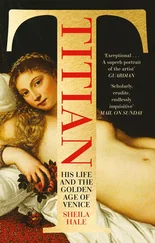
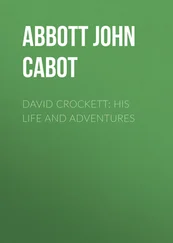
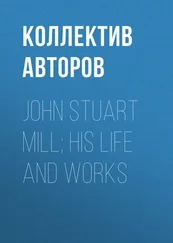
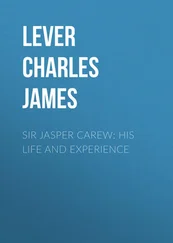
![William Frith - John Leech, His Life and Work. Vol. 1 [of 2]](/books/747171/william-frith-john-leech-his-life-and-work-vol-thumb.webp)

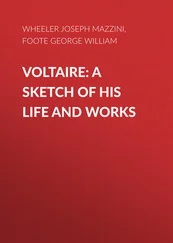
![William Frith - John Leech, His Life and Work, Vol. 2 [of 2]](/books/748201/william-frith-john-leech-his-life-and-work-vol-thumb.webp)
